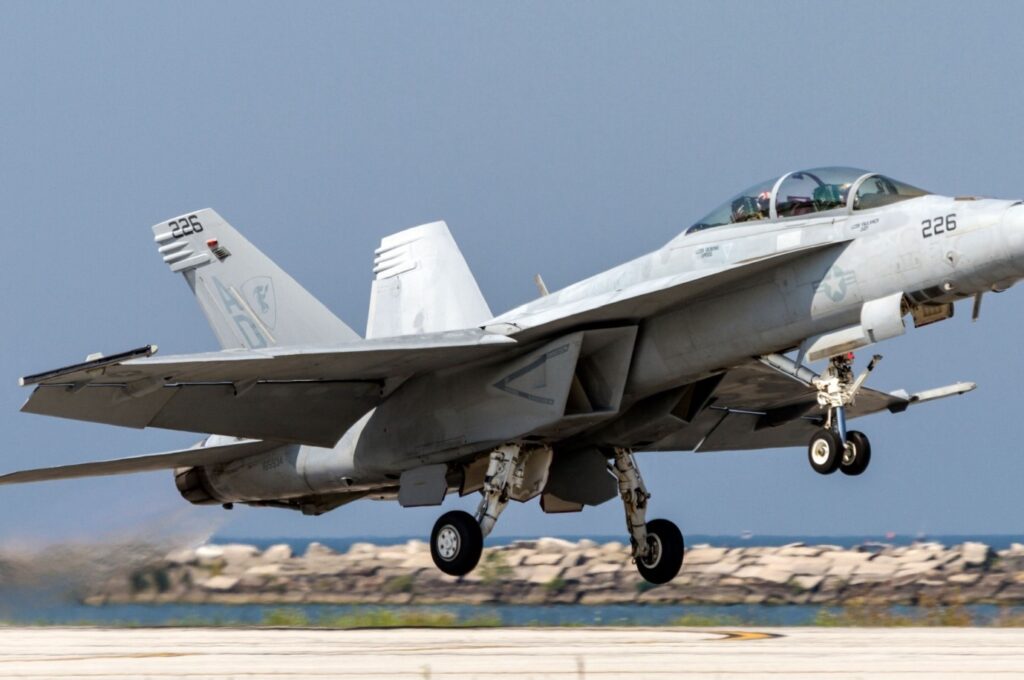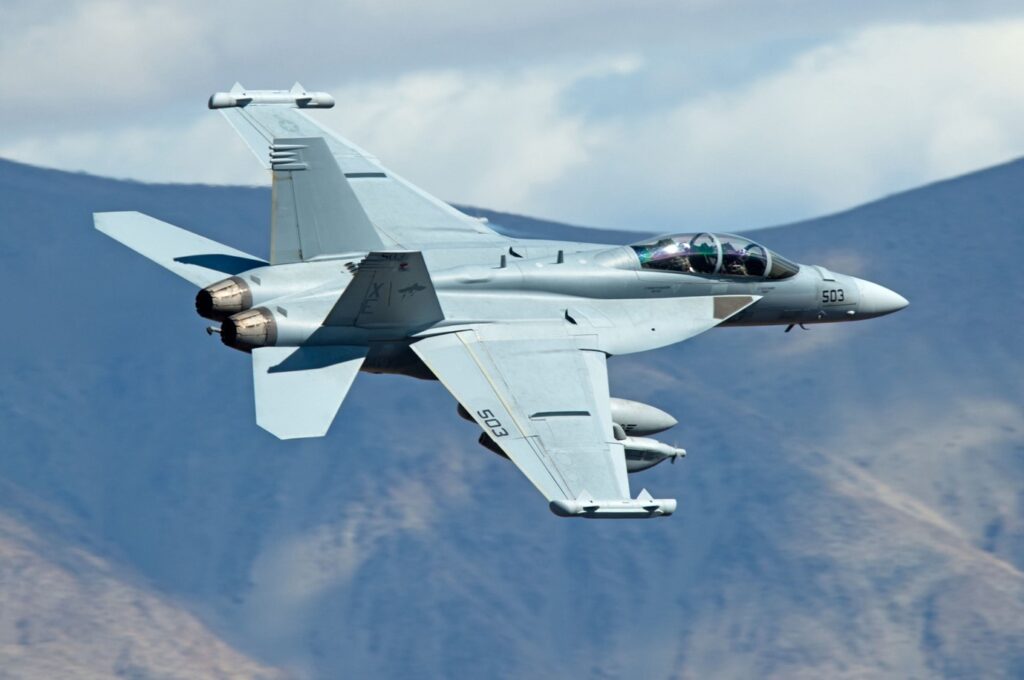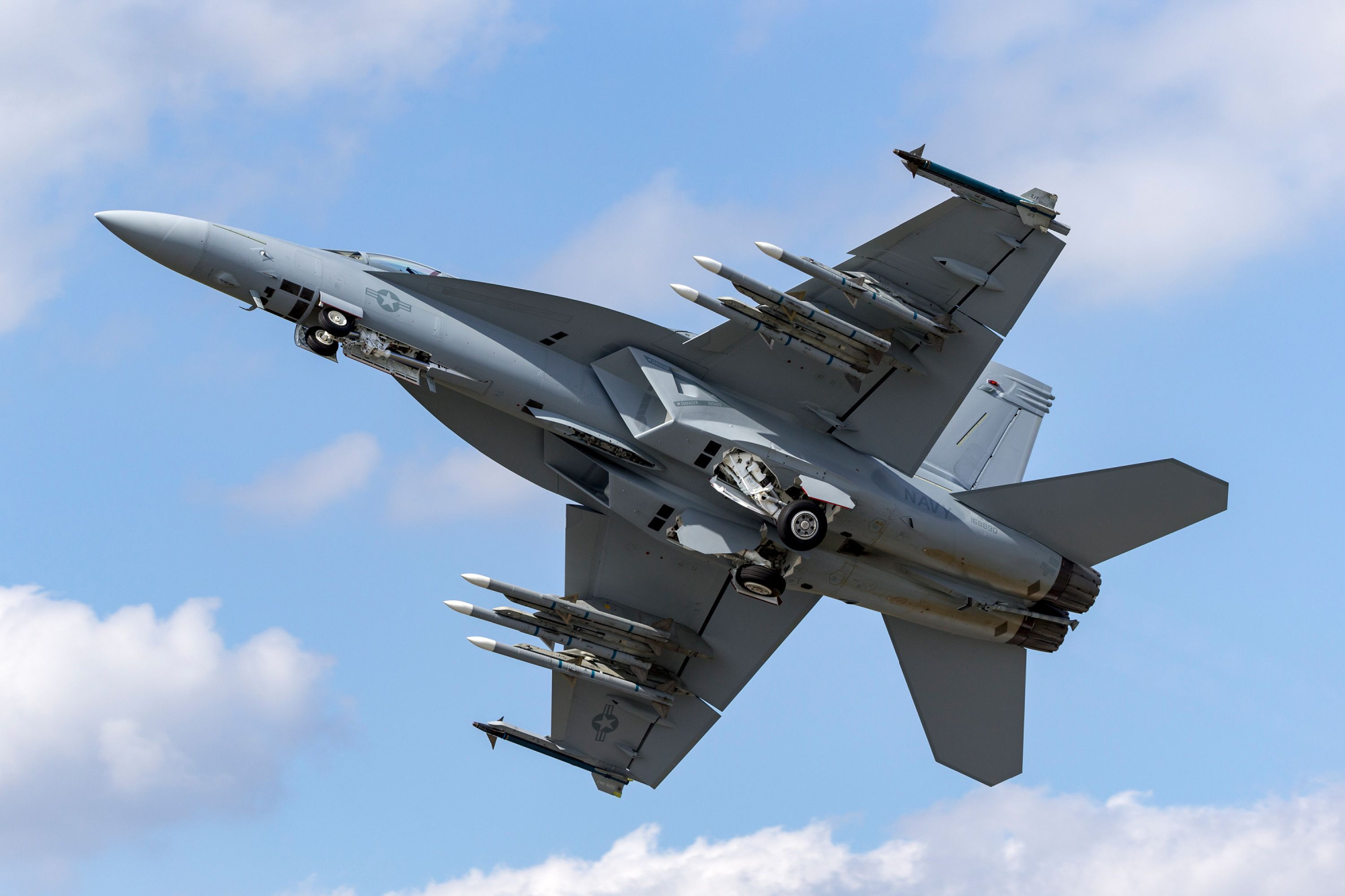The Boeing F/A-18E/F Super Hornet is a carrier-capable supersonic and highly capable multirole fighter aircraft known for its exceptional performance, adaptability and advanced features.
In this article, we’ll delve into the origin, purpose, performance and variants of the Super Hornet, as well as its price, current operators and the future that lies ahead for this remarkable aircraft.
Origin of the Super Hornet
The Super Hornet Block I was first introduced in late 1999, boasting several significant upgrades over its predecessor F/A-18 Hornet. These enhancements included larger fuel capacity, improved avionics, and a more powerful engine, all of which contributed to its increased range and payload capabilities. The F/A-18 E/F Block II has been in active service since 2001 and is expected to retire from the United States Navy by 2023.
Boeing recently introduced the Block III Super Hornet, which saw its first delivery in September 2021. This upgraded version includes a new cockpit display as well as a faster computer processor that will allow upgrades to the aircraft throughout its life span.

Purpose
The Boeing F/A-18E/F Super Hornet serves as a carrier-based multirole aircraft. Its primary mission is to provide air superiority and strike capabilities, making it an indispensable asset for the U.S. Navy and various international air forces. Here’s a rundown of the roles of the F/A-18E/F Super Hornet:
- Air superiority: the Super Hornet excels in air-to-air combat, ensuring control of the skies.
- Strike warfare: it’s a versatile strike fighter for precision ground attacks.
- Electronic warfare: its Growler variant is equipped for jamming and countermeasures to disrupt enemy systems.
- Reconnaissance: the Super Hornet can carry a Shared Reconnaissance Pod (SHARP), a high-resolution, digital tactical air reconnaissance system.
Performance of the F/A-18E/F Super Hornet
The F/A-18E/F Super Hornet’s top speed is Mach 1.8, and it has a combat radius of over 400 nautical miles. Equipped with advanced avionics and radar systems, it can detect and engage multiple targets simultaneously.
General specifications
| Specs | F/A-18E/F Super Hornet |
| Crew | F/A-18E: one pilot, F/A-18F: pilot and weapons systems officer |
| Length | 60.1 ft (18.31 m) |
| Wingspan | 44.9 ft (13.62 m) |
| Height | 16 ft (4.88 m) |
| Maximum Takeoff Weight | 66,000 lb (29,937 kg) |
| Maximum External Payload | 17,750 lbs (8,051 kg) |
| Maximum G-load | 7.5 Gs |
| Service Ceiling | 52,300 ft (15,940 m) |
| Armament | Wide range of guns, missiles, and hardpoints |
Performance specifications
| Specs | F/A-18E/F Super Hornet |
| Maximum Speed | 1,030 kn (1,915 km/h) |
| Range | 1,458 mi (2,346 km) |
| Engines | Two General Electric F414-GE-400 turbofan engines |
| Thrust (per engine) | 13,000 lbf (58 kN) – dry, 22,000 lbf (98 kN) – afterburner |
Variants
The Super Hornet has two main variants, the single-seat F/A-18E and the twin-seat F/A-18F. The primary difference lies in their cockpit configurations, with the F/A-18F accommodating a pilot and a weapons systems officer (WSO). This twin-seat variant is particularly advantageous for training, mission planning, and complex strike missions.

Price of the Super Hornet
Its cost in 2021 was estimated to be around $66 million. The most expensive variant is the EA-18G Growler, which can cost up to $125 million.
Current operators and deliveries
The F/A-18E/F Super Hornet has seen adoption by various countries, with the United States Navy being its largest operator. Others include the Royal Australian Air Force, which employed the Super Hornet as its interim primary fighter aircraft while awaiting its replacement by the F-35 Lightning II, and the Kuwait Air Force, which uses it as a fighter aircraft and interceptor.
Over 630 units of this type were produced by 2020.
Future ahead Boeing’s F/A-18E/F Super Hornet
On February 23, 2023, Boeing announced its intention to cease Super Hornet production by the year 2025. It cited waning demand for the aircraft as well as increasing competition posed by the Lockheed Martin F-35 Lightning II fighter jet.

